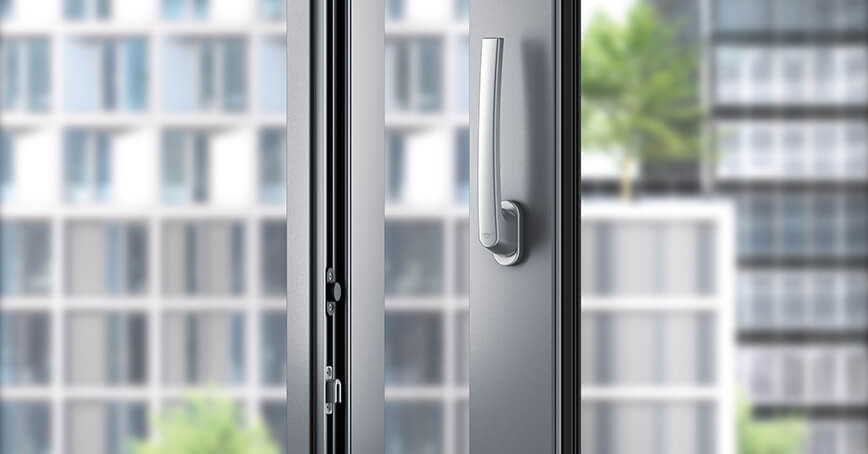A Comparison of European uPVC Windows and American Fiberglass Windows. What is the difference?

When it comes to building energy efficiency, the choice of windows plays a crucial role. What might surprise many is that there are significant differences in window production technologies between the USA and Europe, which have a direct impact on thermal properties.
In this article, we’ll explore these differences by comparing composite windows from Marvin, a leading U.S. manufacturer, with the uPVC windows that are popular in Europe.
Table of content
- The Production of Marvin’s Ultrex Composite Windows
- Comparison with uPVC Windows
- American Triple-Glazed Windows compared to European
- “Three Panes for Show” – Marketing Over Real Improvement
- Comparison by Parameters
The Production of Marvin’s Ultrex Composite Windows
Marvin’s Ultrex composite windows are made from fiberglass reinforced with various additives, creating a durable and stable material. Ultrex is a composite based on polyester resins, which, combined with fiberglass, becomes extremely strong and resistant to weather conditions. The production process of Ultrex windows involves several key stages:
- Pultrusion: This is a continuous molding process where glass fibers are saturated with resin and then passed through a heated die, where the material takes shape. This process produces profiles with very high strength and stability.
- Finishing: After molding, the profiles are cut to the appropriate sizes and undergo additional processes, such as painting or surface finishing, which ensure resistance to fading and mechanical damage.
- Window Assembly: The finished profiles are joined and assembled with glass to create a complete product. The composite frames are lightweight but very durable, eliminating the need for additional steel reinforcements inside the frame.

Comparison with European uPVC Windows
In Europe, uPVC (unplasticized polyvinyl chloride) is a very popular material for window production. The production process of these windows differs from that of composite windows and includes the following stages:
- Extrusion: Similar to pultrusion, in extrusion, PVC is formed into profiles. However, unlike fiberglass, PVC is not as strong on its own. Therefore, uPVC frames are often reinforced with internal steel elements, which increase their rigidity and strength.
- Insulating Chambers: uPVC profiles are designed with multiple internal air chambers, which increase the window’s thermal and acoustic insulation. The space between panes is filled with an inert gas – usually argon or rarely krypton – which is a better insulator than air.
- Assembly: As with composite windows, the profiles are joined and assembled with glass and hardware to create a complete product. The internal steel reinforcements provide structural stability, which is crucial for larger windows.

American Triple-Glazed Windows compared to European
When we think of triple-glazed windows, we naturally expect them to offer significantly improved thermal insulation. However, not all triple-glazed systems are created equal. In the USA, manufacturers like Marvin often use very narrow spaces between the panes in their triple-glazed windows.
For example, Marvin’s Signature Series Ultimate windows have only 1/4” (about 6 mm) or 5/16” (about 8 mm) of space between the panes, resulting in a total glass thickness of just 7/8″ or 1″ (22 mm or 25 mm).
Why is this a problem?
In Europe, where energy standards are much stricter, triple-glazed windows typically have much wider spaces between the panes – usually 11/16″ (18 mm). These wider spaces allow for better thermal insulation because they reduce convection (heat flow) between the panes. Narrow glass packages, like those used in the USA, do not significantly improve thermal insulation compared to double-glazed windows.

When is the distance optimal?
A distance below 15/32″ (12 mm) does not provide sufficient insulation, as heat transfer through convection and conduction is higher.
A larger gap Above 23/32″ (18 mm) can lead to convection currents forming in the gas between the panes, which can reduce the insulating properties.
Additionally, filling the space between the panes with gases like argon or krypton further improves the thermal insulation of the windows. These gases have lower thermal conductivity than air, resulting in better thermal performance, especially when combined with the optimal distance between panes.
Total glass thickness of European-made windows is 48 mm (almost 2″), which is almost twice wider than in American-made windows.
“Three Panes for Show” – Marketing Over Real Improvement
Some US manufacturers often introduce triple-glazed packages just to be able to say they offer triple-glazed windows, similar to their European competitors. However, from a physics and real energy efficiency standpoint, such solutions make little sense. In reality, adding a third pane with such a narrow gap is more of a marketing tactic than a technological improvement.
What Does European Technology Offer?
In Europe, the standard is to use wide spaces between the panes 11/16″ (18 mm) and modern low-emissivity (low-e) coatings, which significantly reduce the U-value (thermal transmittance). These types of solutions not only meet stringent energy standards but also genuinely improve indoor thermal comfort, reducing heating and cooling costs.
Would you like to have better knowledge about using European windows in American projects?
Read our article about differences between American and European windows.

Comparison by Parameters
- Durability: Ultrex composite windows, thanks to the use of fiberglass, are very resistant to weather and mechanical factors, eliminating the need for additional reinforcements, making them lighter but just as durable as uPVC windows.
- Insulation: uPVC windows often outperform composite windows in terms of thermal insulation, thanks to the use of insulating chambers. In the case of fiberglass windows, additional low-e coatings and other technologies may be necessary to improve insulation.
- Longevity and Maintenance: Ultrex is a material resistant to corrosion, fading, and mechanical damage, meaning these windows require minimal maintenance. uPVC windows are also resistant to corrosion but may require more attention when it comes to cleaning and maintaining seals and reinforcements.
Summary
Choosing between composite and uPVC windows depends on many factors, such as thermal insulation requirements, aesthetics, durability, and budget. Marvin’s Ultrex fiberglass windows offer modern technological solutions that are lightweight and very durable. If your concern is mostly about meeting minimal thermal requirements, American windows should be a sufficient solution.
European uPVC windows offer excellent thermal insulation thanks to the use of much more optimal air chambers. The fact, that comparing to US windows, European ones are ~40% cheaper is also worth mentioning. You may find exact prices on our pricing list.
If you care about real thermal performance, additionally increasing profitability of your project, you should definitely consider importing uPVC windows from Europe. It’s worth carefully considering these differences when selecting the right windows for your project.

Still not sure which windows you should choose?
Our goal is to solve your problems and find best possible solution for your project. If only you have a window project, contact us immediately!
Book a project consultation






